
Spring Roller Mounting Guide
Congratulations on your new pull-down, spring roller maps!
Installing your roller for the first time can seem tricky but we will guide you through each step below.
PLEASE READ ALL INSTRUCTIONS FIRST
Instructions on how to mount spring rollers should be followed to prevent damage. Failure to carefully follow these instructions could void the product warranty.
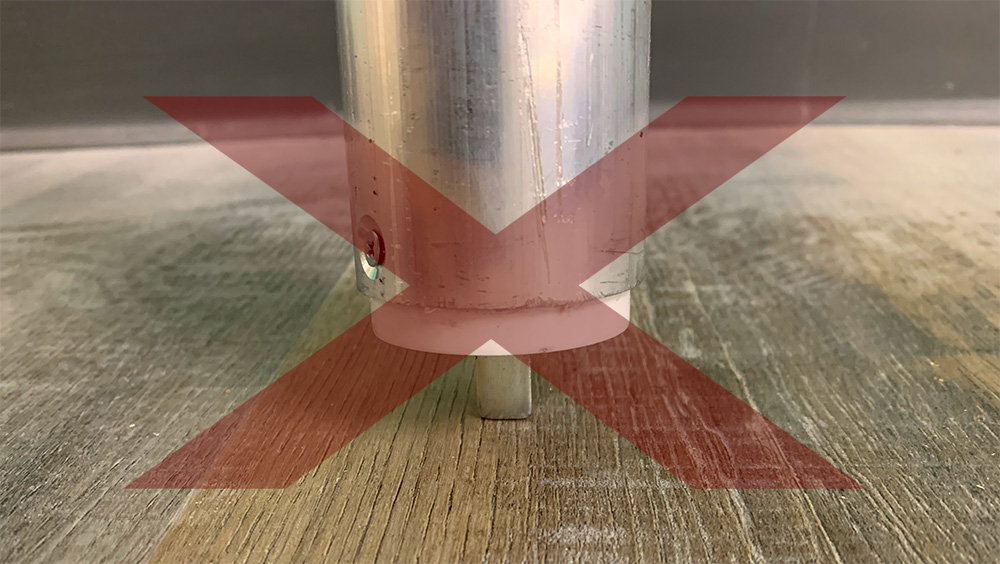
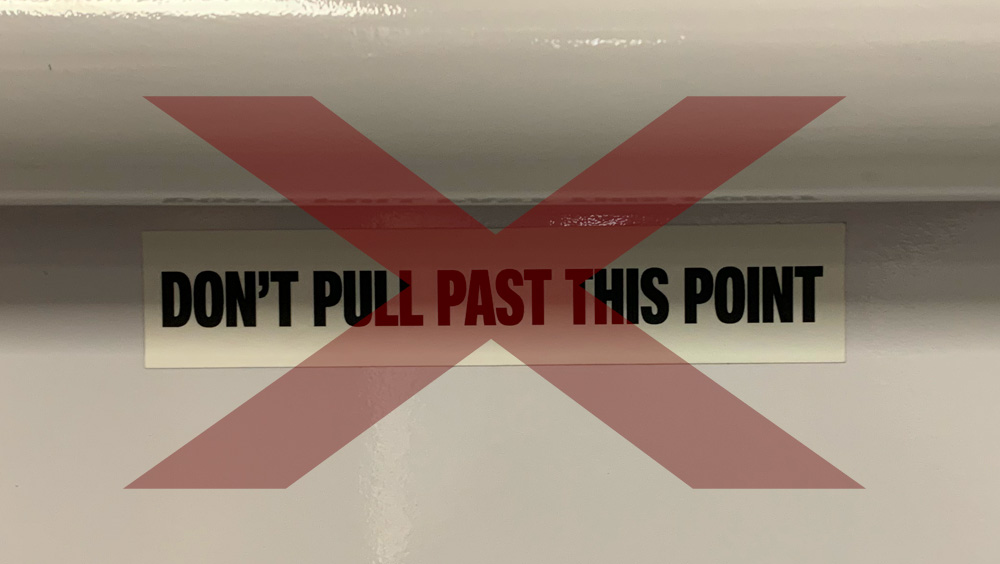
Warnings
Before installing your spring roller please read the following:
- Never stand Spring Roller on either end during mounting process. Note spring rollers are tensioned and tested before shipping and impact to the end of the roller may cause the tension to release. Spring Rollers should be stored in a horizontal position on a flat surface.
- Never pull the map down by the wood rail. Only the loop cord should be used to pull the map down. Pulling the bar may rip the map off the bar.
- Spring Rollers should NOT be pulled down down past the “DO NOT PULL PAST THIS POINT” sticker placed above the image on your front map. Your map may not roll back up if it’s pulled past this point.
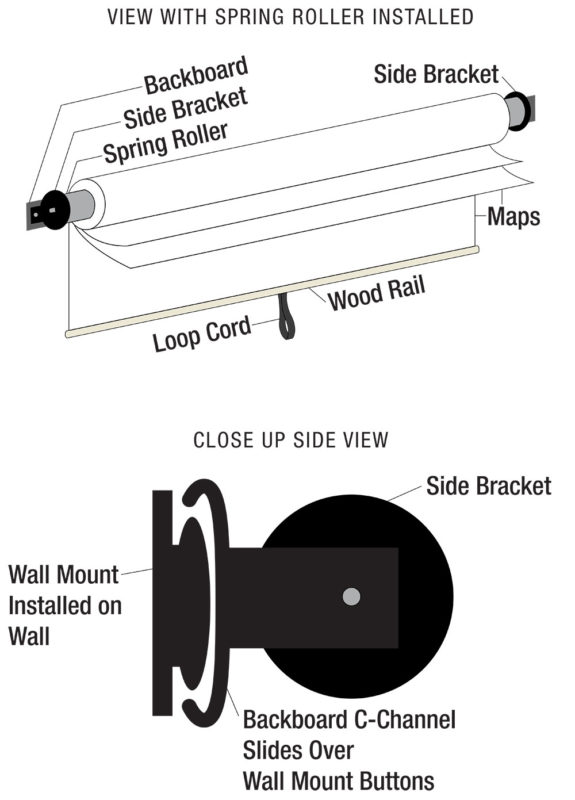
Parts of a Spring Roller
Understanding the different parts of your spring roller will make installation easier.
- Maps – most maps are laminated but some may be printed on canvas.
- Spring Roller – maps are secured then wrapped around the spring roller. This is the part that holds the tension allowing you to pull down the map and retract it.
- Backboard – this is the metal piece that holds the spring roller in place. Please note that a backboard will not be included if you only ordered a spring roller.
- Side Brackets – there is a bracket on each side of the backboard that locks the spring roller. One bracket will have a round hole, one will have a rectangular hole.
- Wall Mounts – these brackets are secured to the wall then the backboard is slid over the brackets to mount your spring roller on the wall. Small spring rollers will use one bracket, large spring rollers require two brackets.
- Rail – a wooden rail is secured to the bottom of the back map.
- Loop Cord – this is the black piece of material connected to the rail that is used to lower and retract your maps.
Attaching The Backboard
You can skip this entire section if you ordered a spring roller with a backboard. In this case, we have mounted the backboard to the spring roller for you.
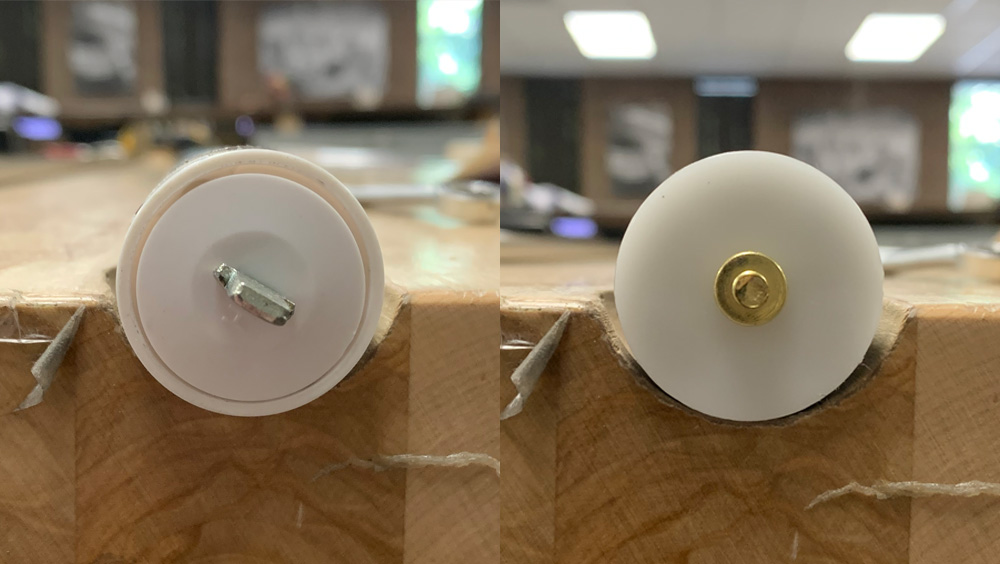
PLEASE NOTE…
Please notice that your Spring Roller has a different pin shape on each side. One has a round pin, one has a rectangular pin. Each pin needs to be installed into the corresponding shape within the side brackets.
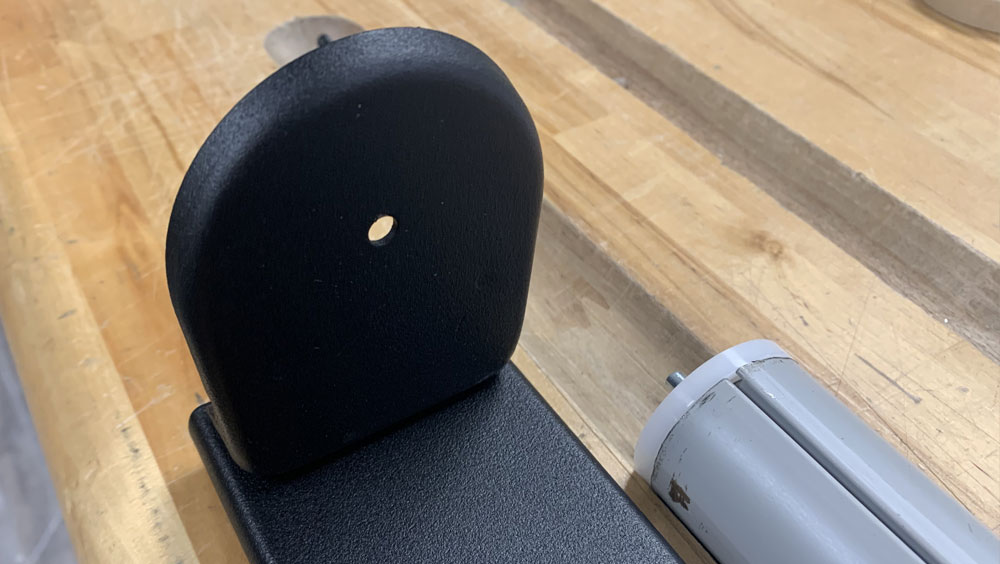

STEP 1 – Attach the Round Pin Side Bracket
Attach the side bracket with the round hole (not the rectangular hole) to the backboard using the bolt, lock washer, and nut provided. The side bracket with round slot will be right side of your spring roller when facing it on the wall.
Please place the locking washer on the bolt side, not on the nut side, as pictured. The order top to bottom should be bolt, locking washer, bracket, backboard, and the nut.
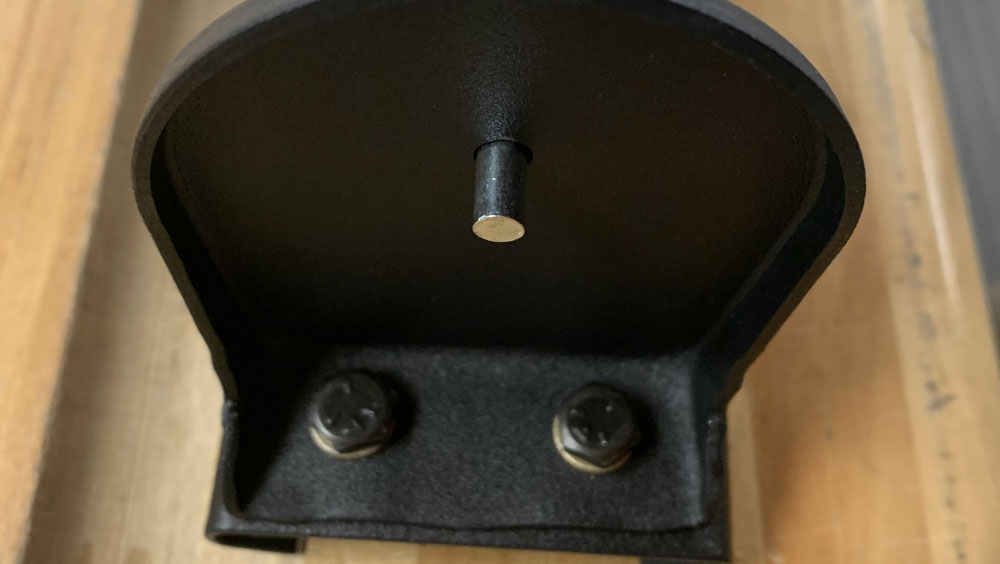
STEP 2 – Insert Spring Roller Round Pin
Please the round pin into the round hole within the side bracket.
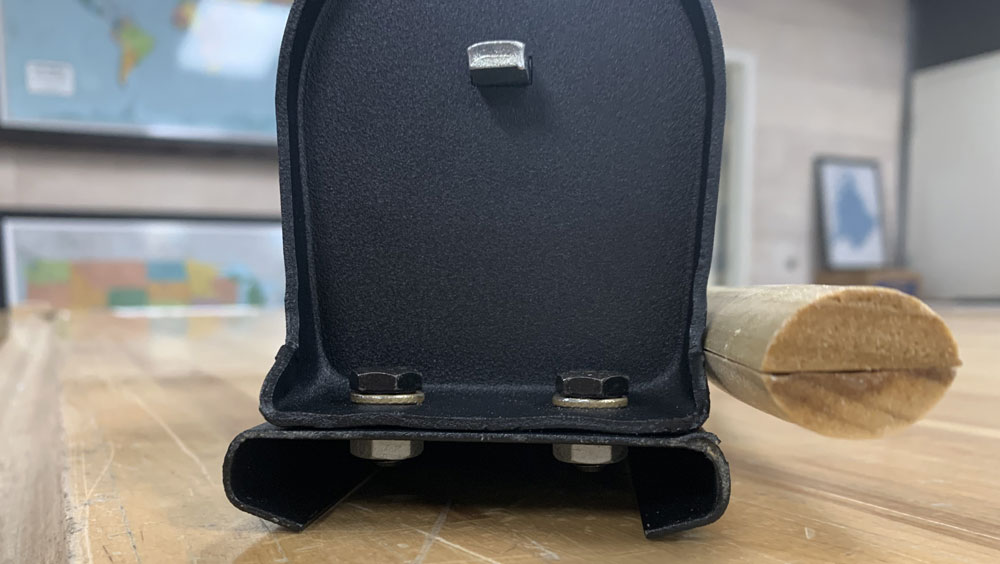
STEP 3 – Secure Rectangular Pin Side Bracket
Slide the second side bracket with the rectangular hole over the rectangular pin on the other side of the spring roller. This will hold the tension in place. Secure the bracket to the backboard with the bolt, washer, and nut. This will lock the spring roller between the two brackets onto the backboard.
Be sure not to twist and release the pin while installing because this could release the tension added to your spring roller.
Now you are ready to hang your spring roller and backboard onto the wall.
Mounting the Spring Roller on the Wall
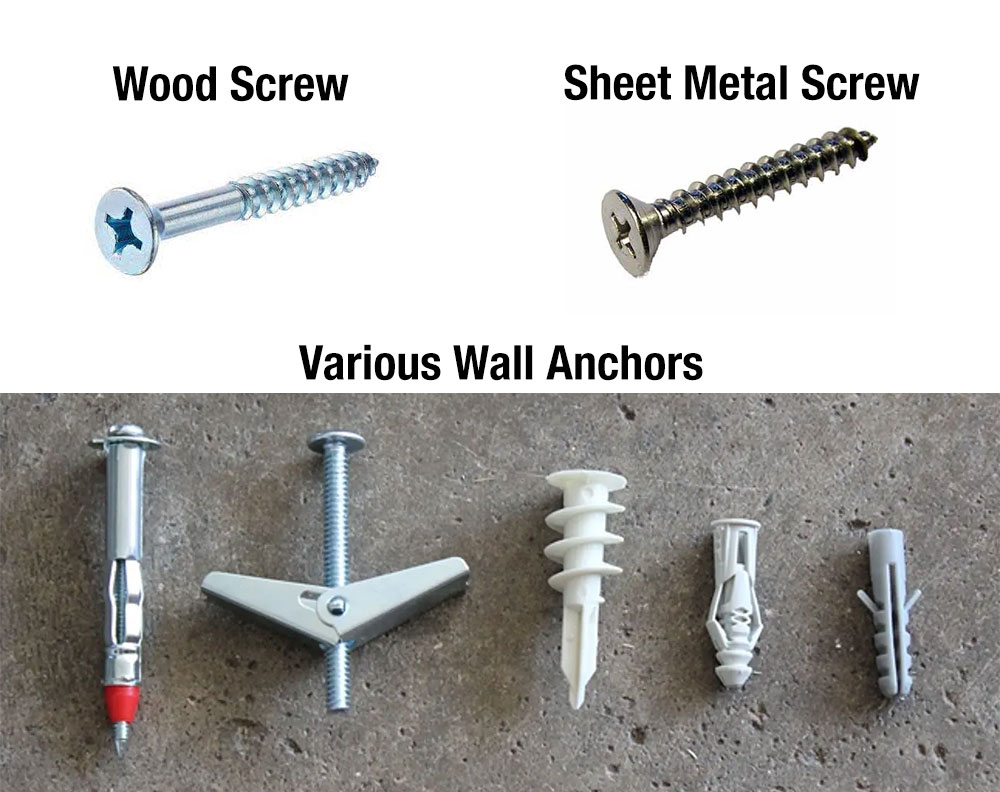
STEP 1 – Select the Proper Hardware
Map Shop does not send you the hardware (screws or wall anchors) you will need to secure the mounting brackets to the wall. Please consult an expert to determine the composition of your wall and the best hardware for your situation. The following recommendations generally work but do not apply to all situations:
- Wood Surfaces: Use #7 x 1″ flat head wood screws. Mark the location of each eyelet hole on the surface. Drill a pilot hole for each eyelet. Drill 1/4″ deep, using a 1/16″ to 1/8″ drill.
- Metal Surfaces: Use #7 x 1″ flat head sheet metal screws. Mark the location of each eyelet hole on the surface. Drill a pilot hole for each eyelet. Drill 1″ deep, using a 1/8″ to #30 drill.
- Plaster, Brick, Cement, or Cinderblock Surfaces: Use #7 x 1-1/4″ flat head wood screws. Mark the location of each eyelet hole on the surface. Drill 1″ deep using a 1/4″ drill. Fill holes with lead screw shields, size 1/8″ x 1″.
Due to weight of your spring roller, wall anchors are required to ensure longterm safety.
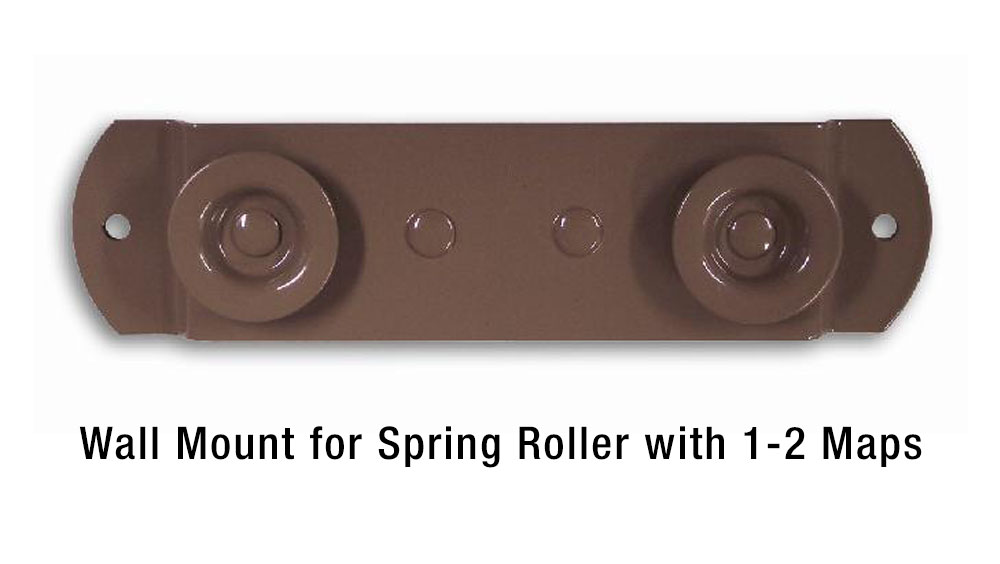
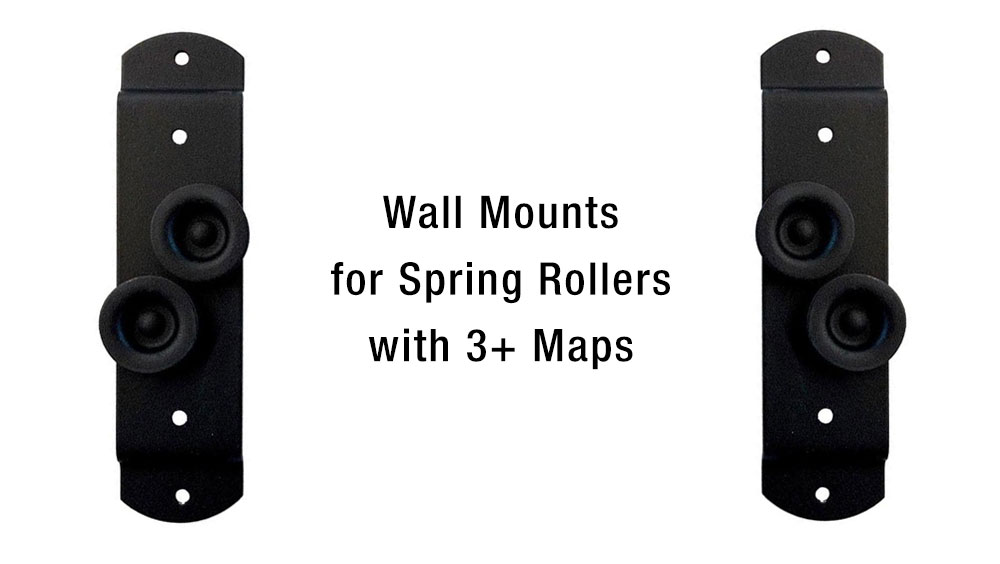
STEP 2 – Select the Proper Wall Mount(s)
If your Spring Roller contains 1-2 maps, you will need a single wall mount. If your Spring Roller contains 3 or more maps, you will need two wide wall mounts. See examples of each wall mount here but please note that the finishing and color of your wall mount can vary from those pictured.
Click here to see all our mounting hardware.
YOUR PRODUCT WARRANTY WILL BE VOIDED IF DIFFERENT MOUNTS ARE USED.
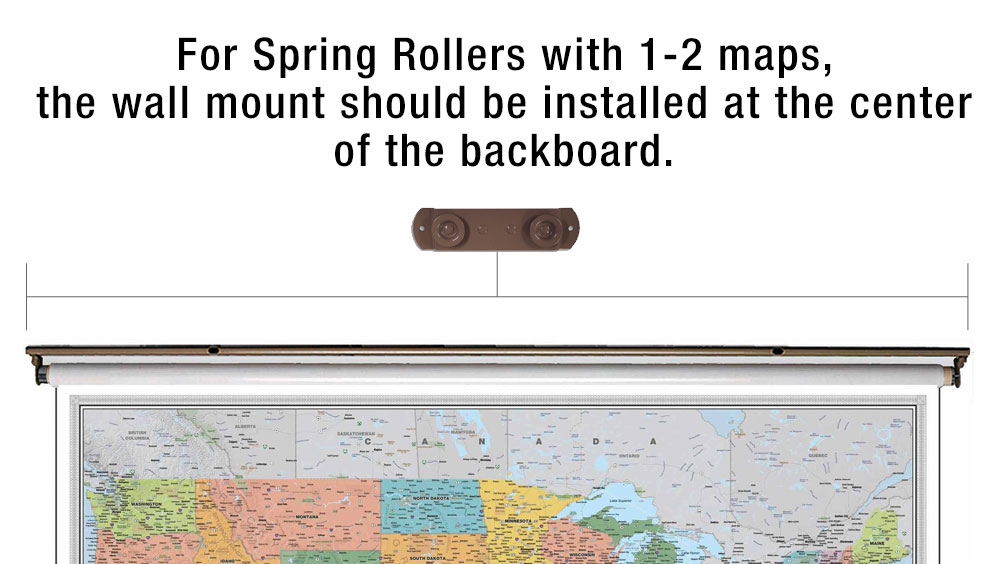
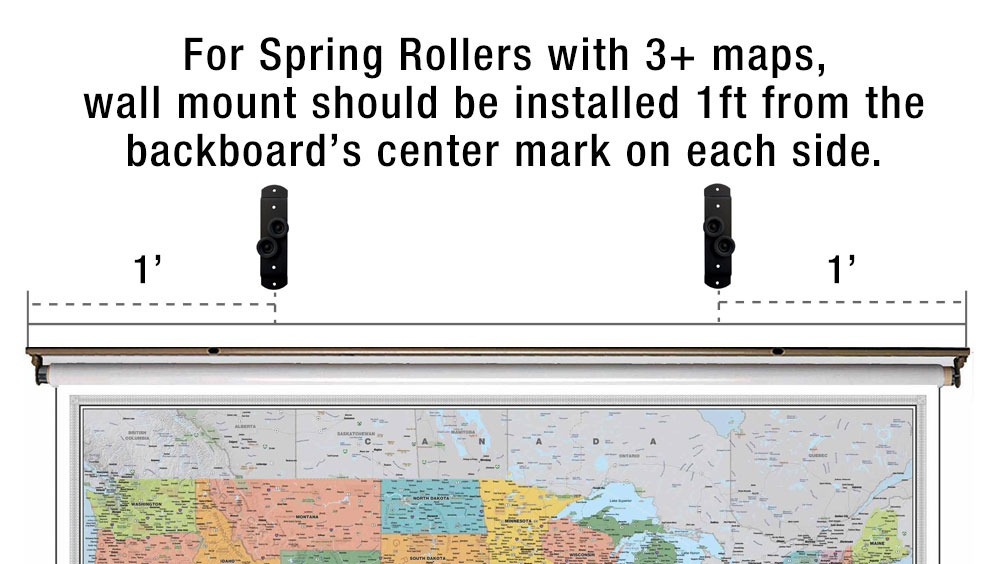
STEP 3 – Select the Proper Mounting Bracket Position
Determine the location for your spring roller and ensure there is room to slide the spring roller over the wall mount. If there is heavy furniture to each side of your wall mount, you will not be able to slide the spring roller over the wall mounts.
Wall Maps containing 1 or 2 maps: Backboard mounting bracket will be in the middle of backboard when in final position.
Wall Maps Containing 3 or more maps: Requires 2 backboard mounting brackets and final placement roughly one foot inside each end of the wall map backboard.
Place a mark on your wall at least 6ft from the floor at the center point where you want your Spring Roller installed.
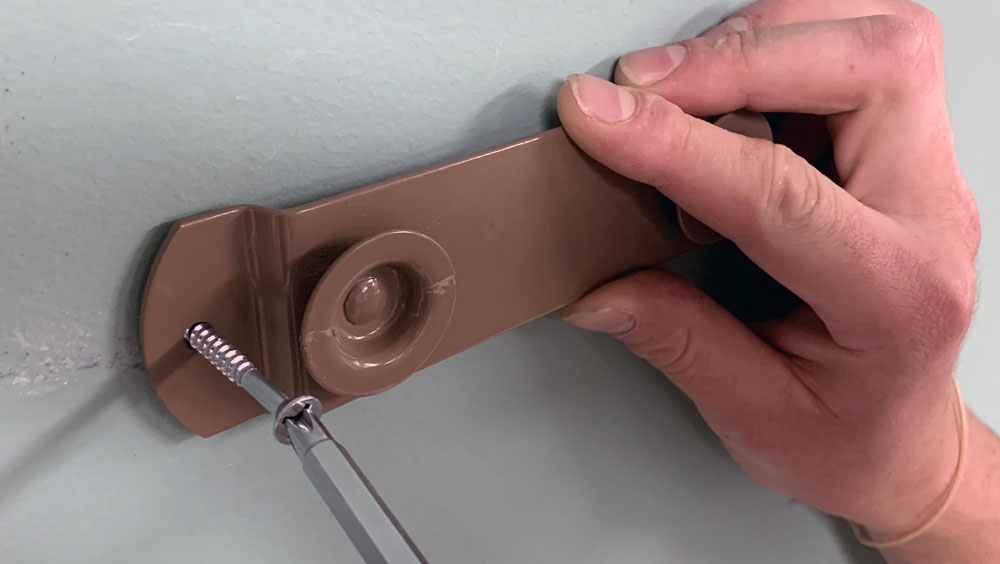
STEP 4 – Install Mounting Bracket(s)
Spring Rollers need to be installed level to the ground, so make sure holes are properly marked and tested for level before any holes are drilled.
Hold your wall mount(s) on the wall in the proper locations as described in Step 2 and mark the hole locations. Before drilling, confirm your holes are level.
Now use the proper installation hardware described in Step 1 and install the wall mounts to the wall.
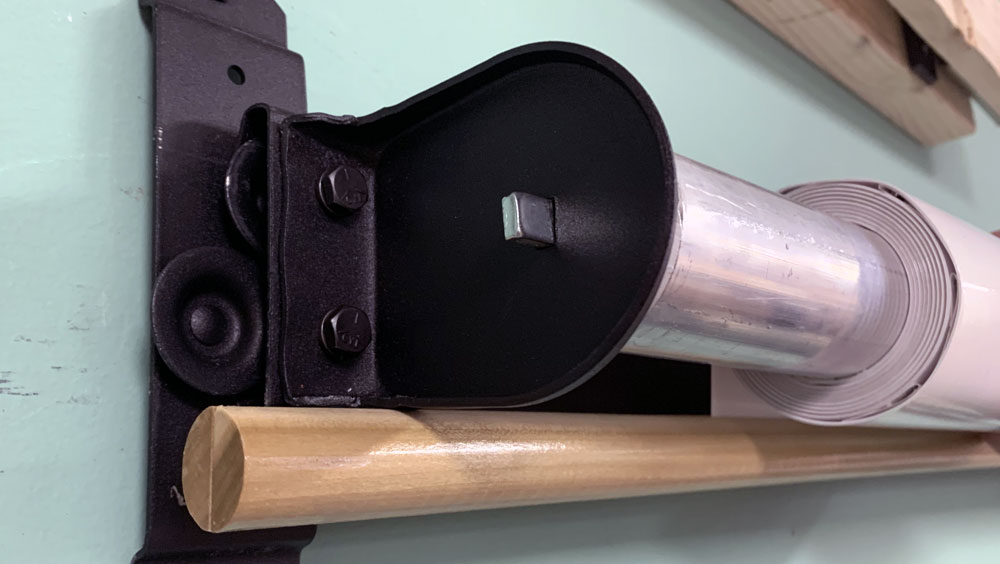
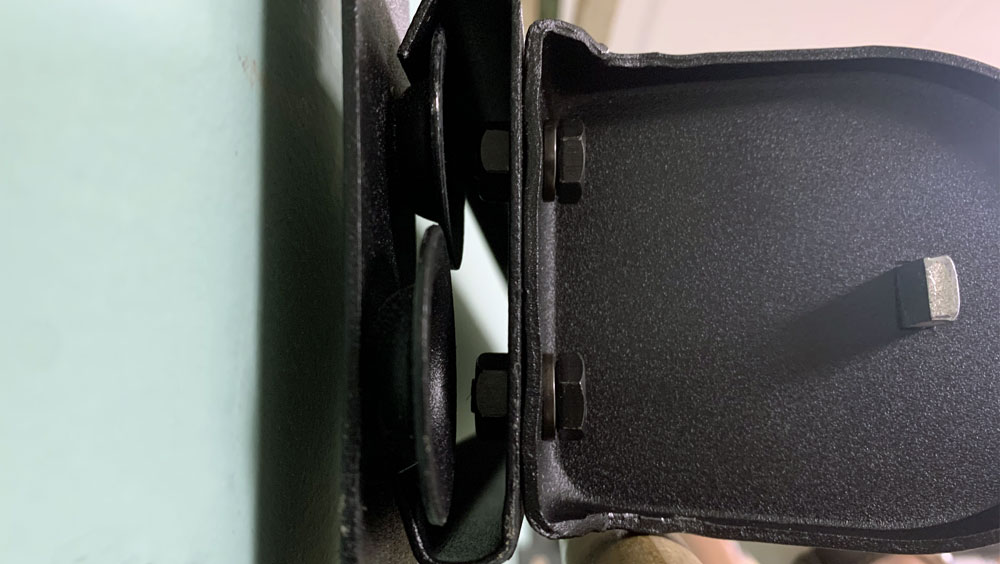
STEP 5 – Slide Spring Roller onto the Wall Mount(s)
Lift your assembled Spring Roller and guide the backboard’s channel through the buttons on the wall mounts.
If your Spring Roller has 1-2 maps, slide the channel over the buttons and center your map on the backboard mounting bracket.
If your Spring Roller has 3+ maps, slide the channel over the buttons until each wall mount is about 1ft from the each edge of the Spring Roller.
You have sucessfully installed your spring roller wall map!
How To Use After Installation
Be sure to pull your spring roller down from the loop cord attached to the bottom rail. Never pull a spring roller down by the sides of a map or by the side of the rail. This may tear the maps.
Your top map will may have a sticker that reads “DO NOT PULL PAST THIS POINT” above the top of the map image. Where this sticker is placed depends on the heights of all the maps included. Once you see full image of the map, you should stop pulling the map down and do not pull past the sticker.
If pull your roller down past the “DO NOT PULL PAST THIS POINT” sticker, the roller can get stuck in the down position. If that happens, you can follow the Troubleshooting steps below to set tension again.
Be sure to SLOWLY allow your Spring Roller to retract back when done with usage to prevent damage to maps and spring roller.
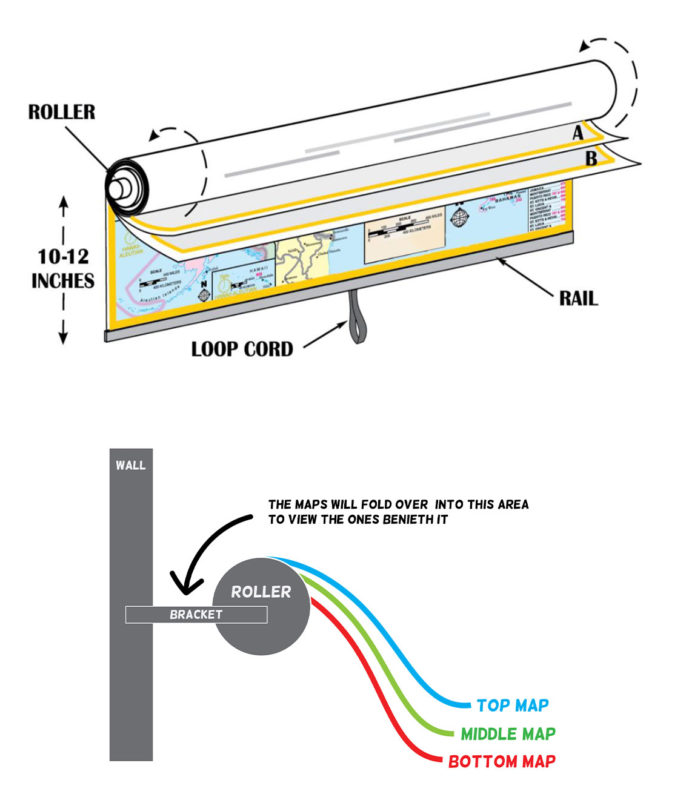
Multiple Maps
If you have a set of multiple maps on one roller and want to reveal one of the maps hidden under the first map, please do the following:
- Reach up and slowly pull the maps down by the loop cord about 8-10 inches.
- Separate the maps in front of the one you want to view. Then roll them up and over so that they fall behind the roller (but front of the backboard) while you continue pulling the rest of the maps down by the loop cord. The front maps will roll away from sight behind the map you’d like to view.
- Make sure you don’t pull past the top of the map image on the map you’d like to display. This will ensure you don’t pull the maps past the “DO NOT PULL PAST THIS POINT” sticker that’s on the top map.
- To retract your spring roller, pull the map down and toward you slightly and then slacken your downward pull and slowly guide the maps back up. This motion may take a bit of practice to retract smoothly and in one try but this can normally be accomplished after a few tries.
Troubleshooting
NOTE: If the spring roller does allow movement of the Wall Map(s) to move up and down but not enough tension for pull usage, make sure the wall map(s) are pulled down slightly and locked into place before starting the process.
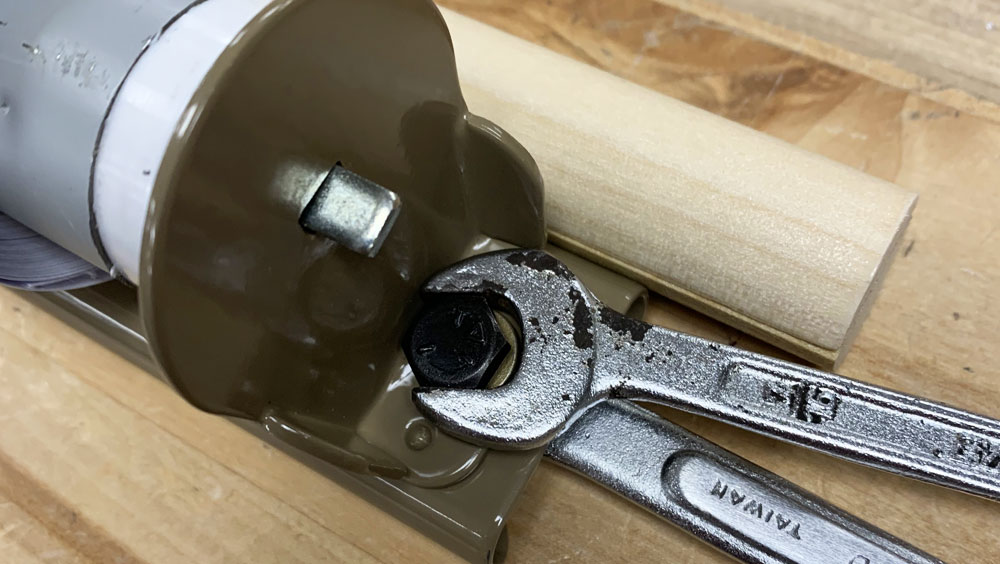
Step 1
Remove the Wall Map(s) and backboard from the wall by sliding it out of the backboard mounting bracket(s). Then remove the side bracket (side bracket with rounded hole)from the backboard by taking off the bolt and nuts.
Do NOT bend the backboard side brackets to remove from backboard.
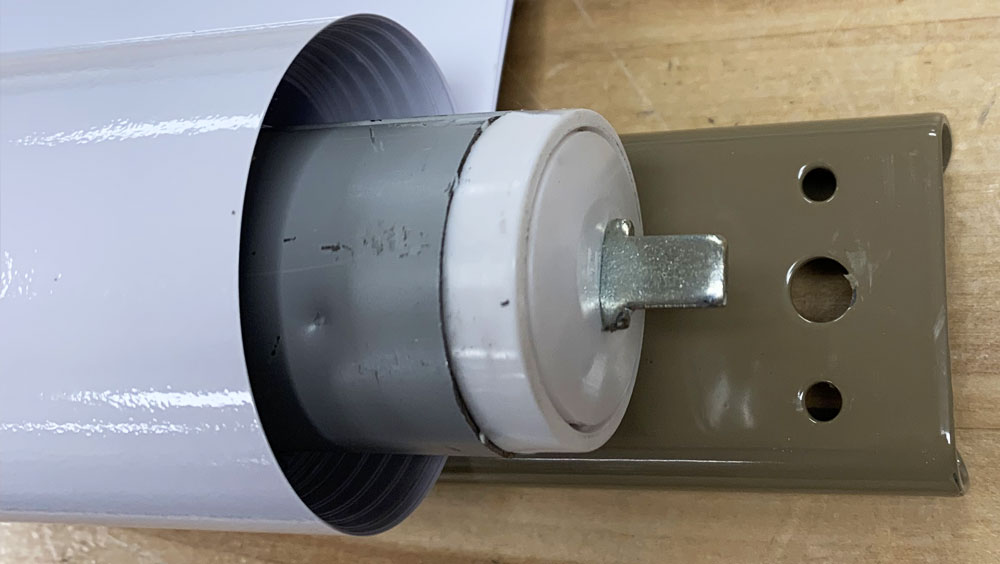
Step 2
Inspect each end of the roller. On one end, you will observe a round stationary post and on the other end, you will notice a flat post that can be turned. The flat post end has a gear type mechanism that is hidden within the roller. This is the end that needs to be re-sprung.
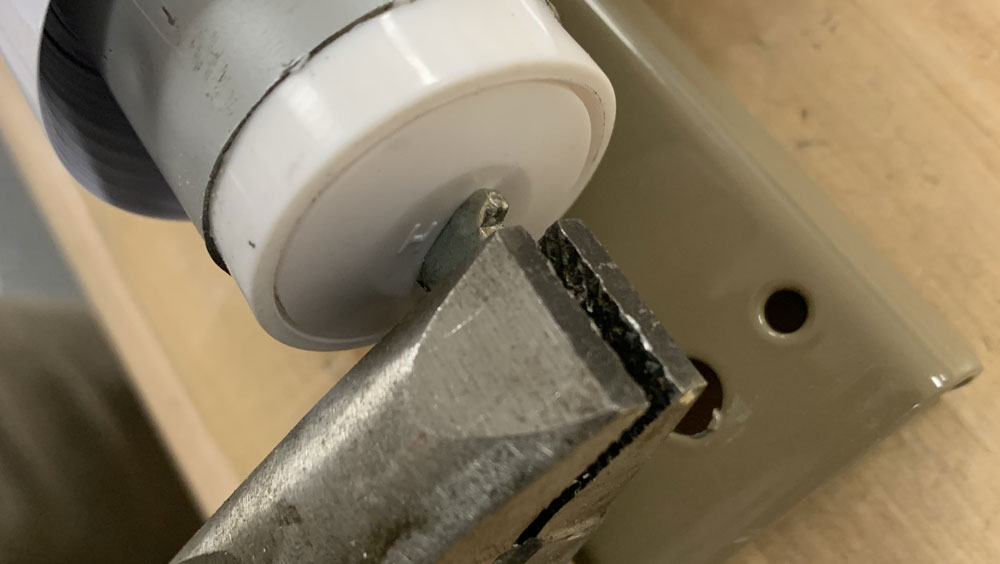
Step 3
To re-spring the tension, hold the roller parallel to the floor (Map(s) should be tightly wrapped around the spring roller). Grasp the flat post end of the roller with a pair of pliers and turn it clockwise, one click at a time. Continue turning five to six full rotations. Re-hang map on mounting brackets and check for proper tension.
Repeat several more turns if additional tension is needed for proper spring action.
Now reinstall the side brackets and install the Spring Roller back onto your Wall Mounts.


